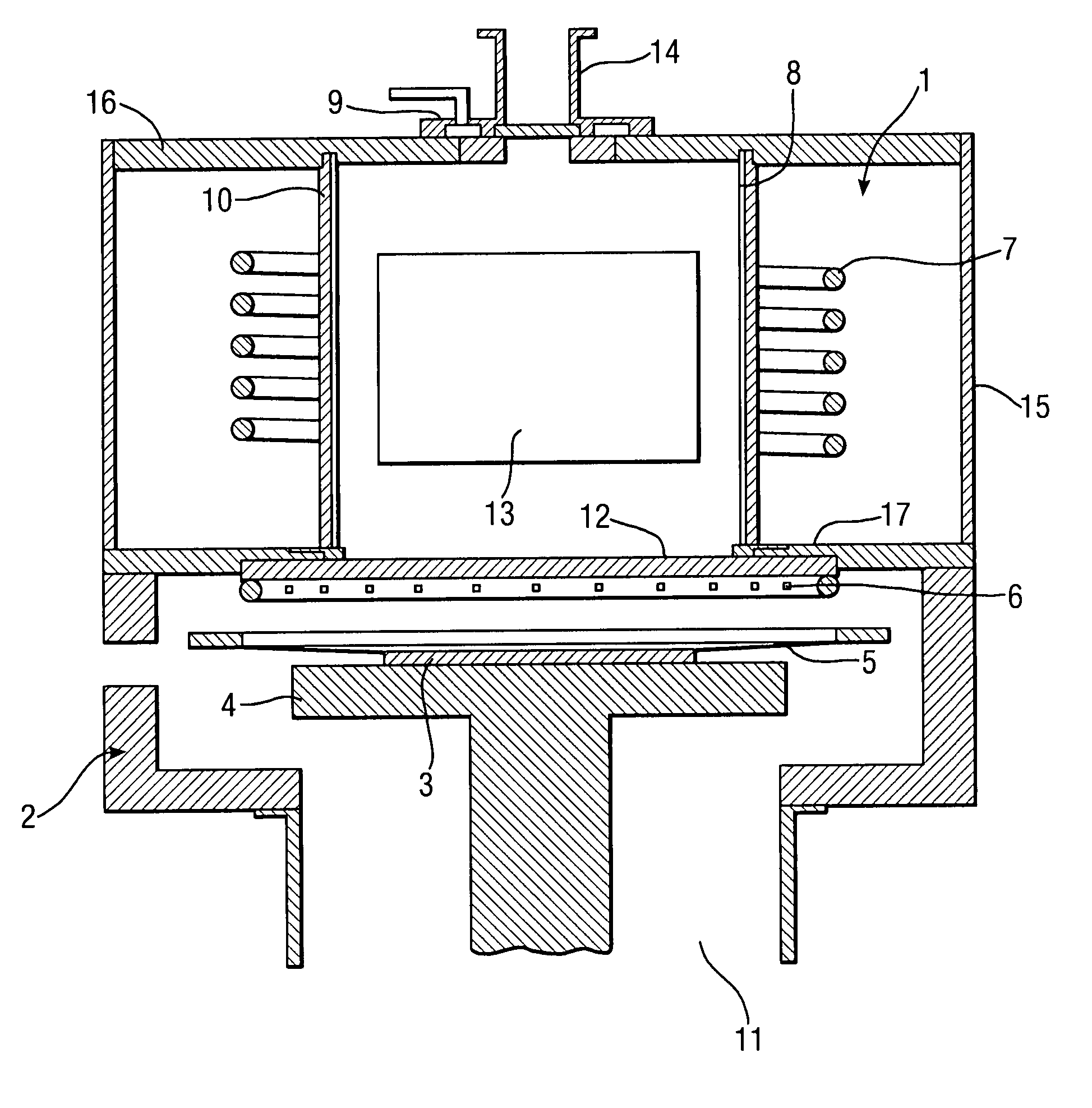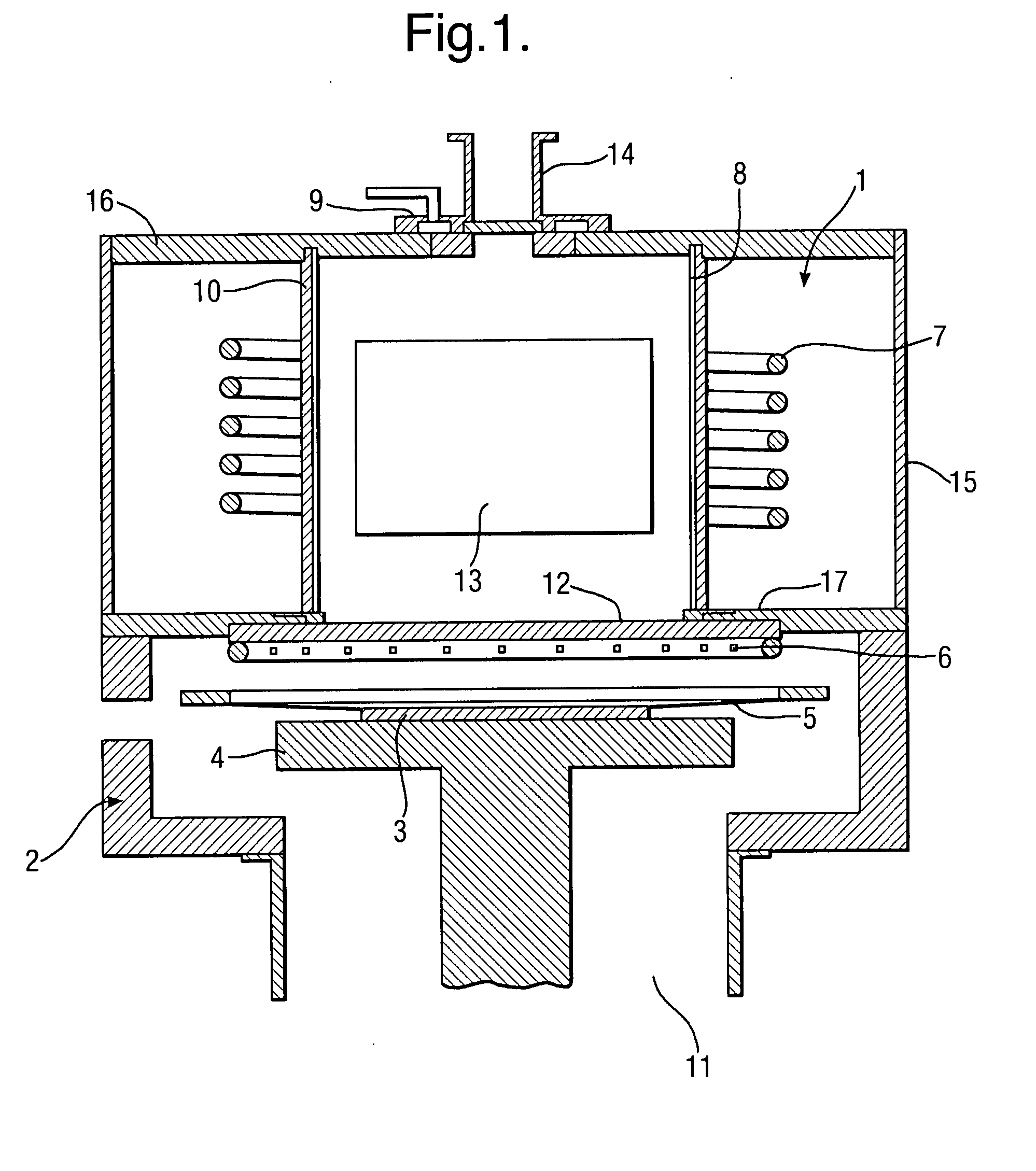Surface processing apparatus
- Summary
- Abstract
- Description
- Claims
- Application Information
AI Technical Summary
Benefits of technology
Problems solved by technology
Method used
Image
Examples
Embodiment Construction
[0050]FIG. 1 is a schematic illustration of a high-density plasma chemical vapour deposition (HDPCVD) system. The system consists of two main components: a plasma source 1 and a processing chamber 2. The plasma source comprises a plasma chamber 8 constructed from a dielectric cylindrical tube with a vertical axis surrounded by an electrostatic shield 10. Typically, quartz or alumina is used as the dielectric. At the top of the cylindrical tube 8 is a set of gas inlets 9, which have an axially symmetric distribution and are used to inject a first gas or gas mixture into the plasma chamber used in the plasma generation. Beneficially, this first gas mixture includes a noble gas such as argon. This gas or gas mixture is ionised and excited within the plasma source 1, then transports to the processing chamber 2 by a combination of flow and diffusion.
[0051] Surrounding this plasma chamber 8 is a water-cooled radio frequency (RF) coil antenna 7 that forms an inductively coupled coil for u...
PUM
| Property | Measurement | Unit |
|---|---|---|
| Temperature | aaaaa | aaaaa |
| Diameter | aaaaa | aaaaa |
| Diameter | aaaaa | aaaaa |
Abstract
Description
Claims
Application Information
 Login to View More
Login to View More - R&D
- Intellectual Property
- Life Sciences
- Materials
- Tech Scout
- Unparalleled Data Quality
- Higher Quality Content
- 60% Fewer Hallucinations
Browse by: Latest US Patents, China's latest patents, Technical Efficacy Thesaurus, Application Domain, Technology Topic, Popular Technical Reports.
© 2025 PatSnap. All rights reserved.Legal|Privacy policy|Modern Slavery Act Transparency Statement|Sitemap|About US| Contact US: help@patsnap.com



